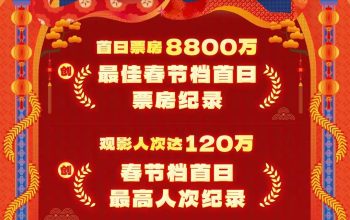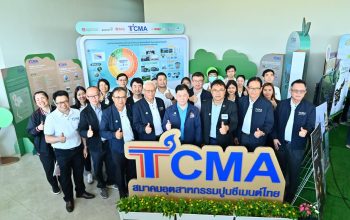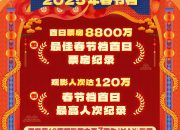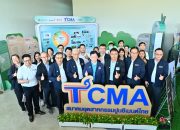Highlights of FY2019/20 Results
- nFor the financial year ended 31 March 2020, total sales were US$3,070 million — a decrease of 6% compared to the prior financial year. Excluding the effects of foreign currency movements, underlying sales decreased by 4%
- Gross profit was US$672 million — a decrease of 11%
- Operating profits decreased by 1% to US$341 million or 11.1% of sales (compared to 10.5% of sales in FY2018/19)
- Goodwill and other intangible assets were impaired by US$796 million
- Net loss attributable to shareholders was US$494 million — compared to a net profit of US$281 million in the prior financial year
- Underlying net profit, excluding the impairment of intangible assets and other significant non-cash items, was US$191 million — a decrease of 17%
- Free cash flow from operations increased by US$185 million to US$241 million
- As of 31 March 2020, cash reserves were US$384 million and the Group’s net debt (total debt less cash) was US$31 million
CHINA – Media OutReach – 13 May 2020 – Johnson Electric Holdings Limited (“Johnson Electric”), a global leader in electric motors and motion subsystems, today announced its results for the twelve months ended 31 March 2020.
Group sales for the 2019/20 financial year totaled US$3,070 million — a decrease of 6% compared to the prior financial year. Excluding the effects foreign currency movements, underlying sales decreased by 4%. After including an impairment charge against goodwill and some other intangible assets, the Group recorded a net loss attributable to shareholders of US$494 million. Underlying net profit, which excludes the impairment of intangible assets and other significant non-cash items, decreased by 17% to US$191 million.
Sales Performance
The Automotive Products Group (“APG”), Johnson Electric’s largest operating division, achieved sales of US$2,439 million. Excluding currency effects, APG’s sales decreased by 1%. This represents a substantial outperformance relative to the total production volume of the global light vehicle industry, which declined by approximately 10% over the same period. The primary drivers underpinning demand for many of APG’s subsystems and components are the industry’s long-term imperatives to accelerate the adoption of innovative technology that enables electrification, reduces emissions, and heats, cools or lubricates critical vehicle systems.
In addition, key enduring strengths of the Group in the automotive components industry are its highly diverse base of customers and an almost equal balance of sales across the world’s three main geographic regions.
On a regional basis, the strongest performance was in the Americas where APG increased sales by 8% in constant currency terms against a market where light vehicle production volumes fell by 6%. In Europe, APG sales decreased by 2% in constant currency compared to a decline of 8% in the region’s car production. Asian automotive markets experienced the weakest demand during the period under review.
Even prior to the COVID-19 outbreak, China — the industry’s greatest source of demand growth for the past two decades — saw an economic slowdown partly due to the effect of escalating trade tensions with the United States that has increased uncertainty and weakened consumer confidence. COVID-19 related factory shutdowns in late January and February pushed the industry further into recession, with China auto production volumes falling by nearly 17% in the period under review. Across Asia as a whole, automotive industry production decreased by 12%. Against these exceptionally difficult operating conditions, APG’s Asia sales decreased by 9% in constant currency terms.
The Industry Products Group (“IPG”) achieved sales of US$632 million, which represented 21% of total Group sales. Excluding currency effects, IPG’s sales declined by 15%. A combination of factors contributed to this disappointing performance. These included depressed demand across a number of end markets due to the US-China trade dispute, market share losses in some more commoditized application segments, and customer-specific programme delays or cancellations.
COVID-19 had a mixed impact on the division in the fourth quarter of the financial year. On the one hand, the closure and then gradual ramp-up of IPG’s production capacity in China significantly constrained the division’s ability to fulfil some customer orders. On the other hand, even as the consumer lockdowns became more widespread during March, there has been sustained and, in some instances, growing demand from selected consumer sectors such as medical devices and home improvement products.
Impairment of Goodwill and Other Intangible Assets
As required by the Hong Kong Accounting Standards, management has undertaken its annual assessment of goodwill and other intangible assets on the Group’s balance sheet as of 31 March 2020.
Management believes that in the near term, high unemployment caused by the COVID-19 health crisis will adversely affect disposable income and consumer confidence. This is expected to lead to weak consumption that will outlast the social and economic lockdowns related to the coronavirus outbreak itself. Although growth in demand can be expected to return in the medium to long term, the immediate impact of the global pandemic on certain segments of the Group’s business, especially automotive, is to reset the base for growth and cause future cash flow to decline before gradually improving.
Considering these conditions, as well as an increase in the Group’s weighted average cost of capital, the estimated recoverable amount of goodwill and some other intangible assets is less than their carrying value. As a result, the Company has recorded an impairment charge of US$796 million.
After including the impairment of intangible assets, the Group reported a net loss attributable to shareholders of US$494 million (compared to a net profit of US$281 million in the prior financial year).
The impairment charge is a non-cash item and does not have an impact on the Group’s cash flows, operations, liquidity and debt covenant compliance. It is, however, a sobering acknowledgement of unprecedented market conditions that will have a significant negative impact on sales, especially in the first half of the financial year ending 31 March 2021.
Underlying Profit and Financial Condition
As noted above, the Group’s reported operating profit and net loss attributable to shareholders were both impacted by a number of significant positive and negative non-cash items. Excluding these items, Johnson Electric’s underlying net profit for the year ended 31 March 2020 was US$191 million, a decrease of 17% compared to the prior year.
Free cash flow from operations totalled US$241 million — up from US$56 million in the prior year. While part of this significant improvement in cash flow reflected a reduced level of capital expenditures, it was also the result of the unplanned reduction in working capital in the fourth quarter as sales reduced in the wake of the COVID-19 outbreak.
The overall financial condition and liquidity position of the Group remains sound. Total cash at year end amounted to US$384 million and net debt (total debt less cash) stood at US$31 million. Notwithstanding the reduction in total equity following the impairment of intangible assets, the ratio of total debt to capital at year end was 18% (a decrease from 21% a year earlier).
Dividends
In view of the ongoing deep contraction of the global economy and the high level of uncertainty concerning the timing and pace of recovery, the Board has determined that the business and its shareholders are best served by retaining cash within the Company at the present time and therefore no final dividend will be distributed for the 2019/20 financial year. The Board will continue to monitor the situation carefully.
Chairman’s Comments on the Annual Results and Near-Term Prospects
Commenting on the annual results for the financial year 2019/20, Dr. Patrick Wang, Chairman and Chief Executive, said, “the COVID-19 global pandemic during the last quarter of our financial year that has had a disproportionately large impact on Johnson Electric’s business and financial statements for the year ending 31 March 2020.”
“For the first nine months of the financial year, the Group was performing quite creditably in the context of what were already recessionary conditions in many manufacturing sectors, particularly automotive. Sales revenue was trending well ahead of the market in most business units, gross profit margins were stable, cash flows were improving, and we continued to make solid progress in executing our key strategic initiatives.”
“The COVID-19 outbreak, which was first reported in China in late 2019, changed the operating environment completely. This was felt initially in the Group’s manufacturing operations in mainland China, which were effectively shut down from the beginning of the Chinese Lunar New Year holiday in January through to mid-February 2020 when nationwide containment measures began to be gradually lifted. In March, the virus outbreak reached Europe and North America. Automotive OEM assembly plants and many industrial manufacturing operations in those regions, including a majority of the Group’s production facilities, temporarily ceased production and a number of countries instituted unprecedented government-mandated social and economic “lockdowns” that have yet to be fully lifted.”
Commenting on the near-term outlook for the business, Dr. Patrick Wang, said, “In such extraordinary times — and perhaps until game-changing progress is achieved in developing treatments and a vaccination for the virus — it is not possible to offer meaningful guidance on the near-term financial prospects for the business. What we do know is that sales levels in the first quarter of the current financial year will be substantially weaker than in the same period a year ago. We also know that while it is encouraging that there are indications of an automotive sales recovery in China and that most of our largest automotive and industrial customers are now in the process of re-opening plants in Europe and North America, there is presently no way to accurately project actual end-market consumer demand in the coming months.”
“To address these near-term uncertainties, management is continuing to focus on ensuring the health and safety of our people and on taking a range of steps to preserve cash — including lowering operating costs (including reducing executive salaries) and reducing capital expenditure. With these actions, and given a very sound liquidity position, I remain highly confident that our company will work through the current crisis successfully and emerge in healthy shape.”
“Johnson Electric is evolving to a business model that emphasizes speed, customer responsiveness and “in-region” fulfilment capabilities. At the same time, we are making increasing use of data, digital tools and artificial intelligence to drive continuous improvements in quality and efficiency. Looking past the COVID-19 pandemic, it will be our ability to execute on those core elements in our strategy that will ensure that our business sustains and prospers in the medium and longer term.”
Forward Looking Statements
This news release contains certain forward looking statements with respect to the financial condition, results of operations and business of Johnson Electric and certain plans and objectives of the management of Johnson Electric.
Words such as “outlook”, “expects”, “anticipates”, “intends”, “plans”, “believe”, “estimates”, “projects”, variations of such words and similar expressions are intended to identify such forward-looking statements. Such forward looking statements involve known and unknown risk, uncertainties and other factors which may cause the actual results or performance of Johnson Electric to be materially different from any future results or performance expressed or implied by such forward looking statements. Such forward looking statements are based on numerous assumptions regarding Johnson Electric’s present and future business strategies and the political and economic environment in which Johnson Electric will operate in the future.
















